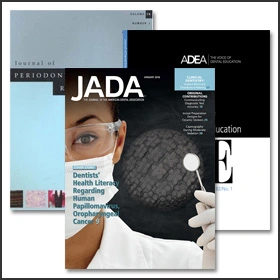Using Research for Clinical Decision-Making: Evaluating a Research Report
COURSE NUMBER: 46
Credit Hours:
2 Hour(s)
SHARE
This continuing education course describes the criteria for judging the quality of a research report and provides guidelines for interpreting the research information. These skills will help oral healthcare professionals decide whether or n...
(Use this feature to create assignments for your students and staff.)
Overview
This continuing education course describes the criteria for judging the quality of a research report and provides guidelines for interpreting the research information. These skills will help oral healthcare professionals decide whether or not to incorporate the research findings into their patient therapy and practice procedures.
Oral healthcare professionals need to ascertain the quality of journals and to read articles critically, distinguishing good from poor research. Reading critically involves having a working knowledge of research while maintaining a healthy skepticism. Brian Burt1 describes such skepticism as "somewhere between blind acceptance and blanket distrust." Just because a study is in print or on the Internet does not mean the conclusions about a therapy or product should be accepted at face value. The art of literature criticism is a skill that can be learned, and the practice of this art will contribute to knowledge of the literature.
The oral health practitioner must continually review dental research articles to learn about new options for therapy and oral health products. How does the practitioner know when he/she should incorporate these new procedures into their practice? This continuing education course presents guidelines for critically evaluating the research and for making decisions about how to apply the research findings to clinical practice. This course builds on the previous course, "Using Research for Clinical Decision-Making: Elements of a Research Report," that describes the various components of a research report.
Intended Audience:
Dental Assistants, Dental Hygiene Students, Dental Hygienists, Dental Students, Dentists, Dental Assisting Students
Date Course Online:
Jun 9, 2002
Last Revision Date:
Jan 23, 2018
Course Expiration Date:
Jan 22, 2021
Cost:
Free
Method:
Self-instructional
AGD Subject Code(s):
Learning Objectives
Upon completion of this course, the dental professional should be able to:
- Explain why the oral health practitioner needs to know how to judge the quality of a research report.
- State why the oral health practitioner should know when the research report was published.
- Explain why the oral health practitioner should know where the research report was published.
- State why the oral health practitioner should review the qualifications of the authors.
- Explain why it is important to evaluate whether the purpose is clearly stated.
- Explain why it is important to evaluate whether the experimental design is clearly described and appropriate.
- Explain why the oral health practitioner should evaluate whether all possible influences on the findings are identified and controls instituted.
- Explain why the oral health practitioner should determine if the sample is appropriate with regard to the number and characteristics of the subjects.
- Discuss why the oral health practitioner should determine if the reliability of the scoring has been assessed.
- Describe some of the considerations in deciding whether comparisons between groups are appropriate.
- Describe some of the considerations in deciding whether the investigation is of sufficient duration.
- Explain why it is important to know if the statistical analysis is appropriate to answer the research questions or hypotheses.
- Describe how the oral health practitioner determines if the research questions or hypotheses were answered.
- Explain the importance of evaluating whether the interpretations and conclusions logically follow the experimental findings and to what population the findings may be generalized.
- Determine the basis for adopting new therapy or products in clinical practice.
Disclaimers
Participants must always be aware of the hazards of using limited knowledge in integrating new techniques or procedures into their practice. Only sound evidence-based dentistry should be used in patient therapy. Note: Registration is required to take test.
Submission Information
Recognition
Approved PACE Program Provider
THE PROCTER & GAMBLE COMPANY
Nationally Approved PACE Program Provider for FAGD/MAGD credit.
Approval does not imply acceptance by any regulatory authority or AGD endorsement.
8/1/2021 to 7/31/2027
Provider ID# 211886
(Use this feature to create assignments for your students and staff.)



